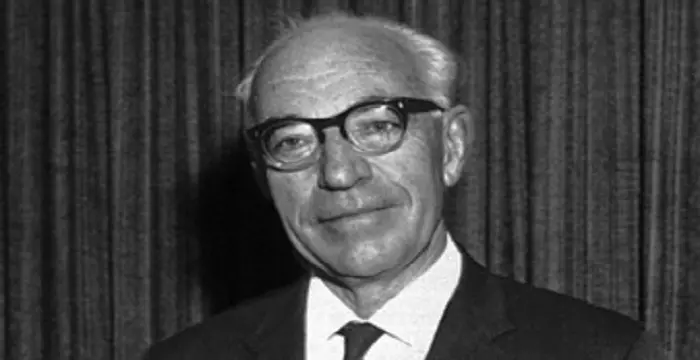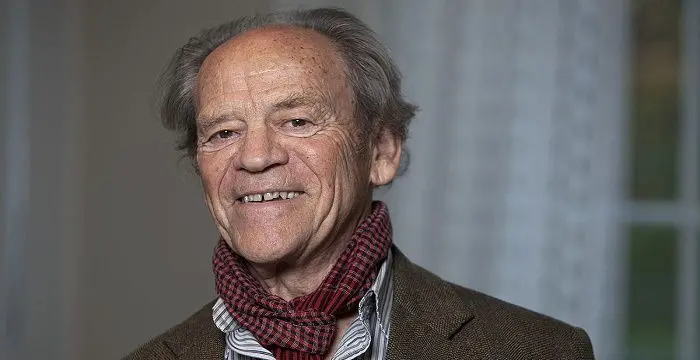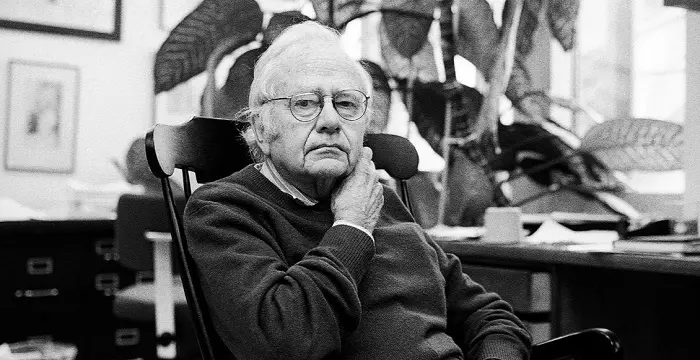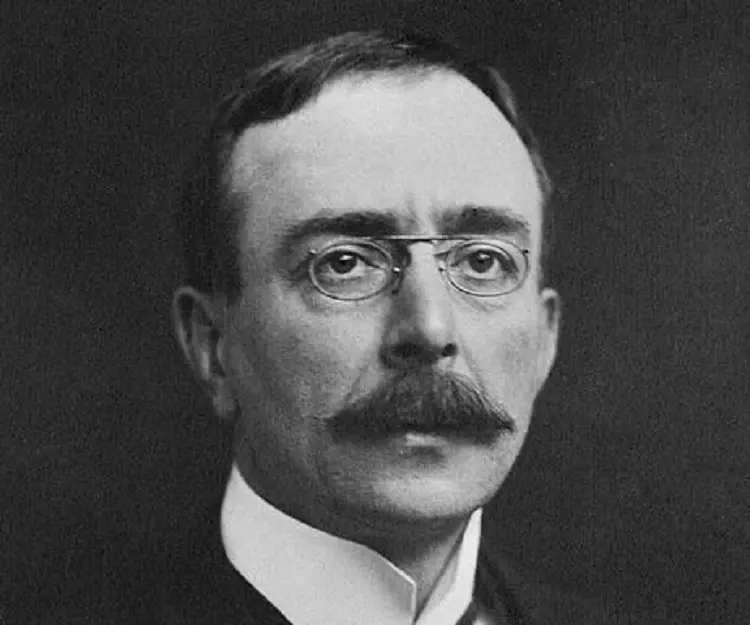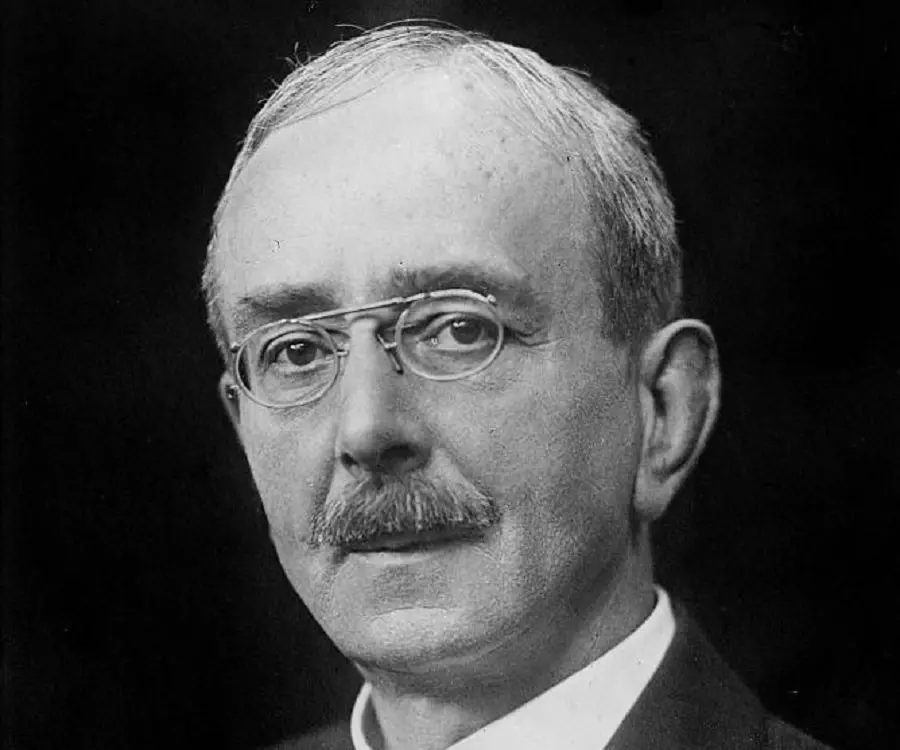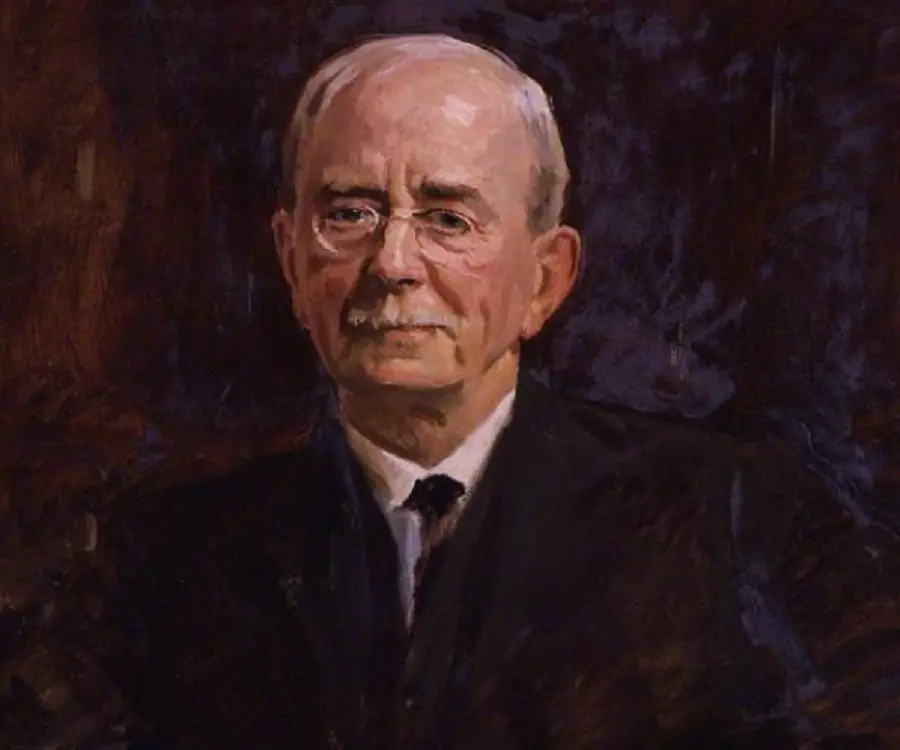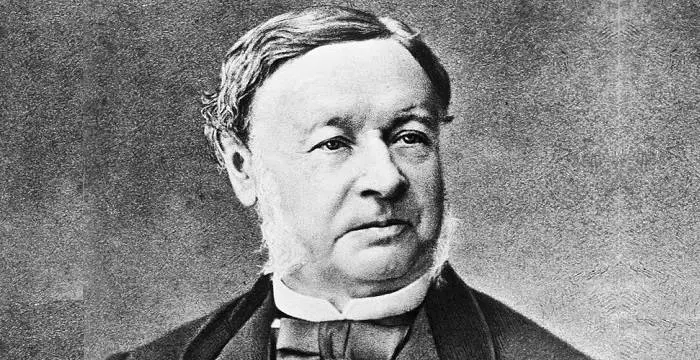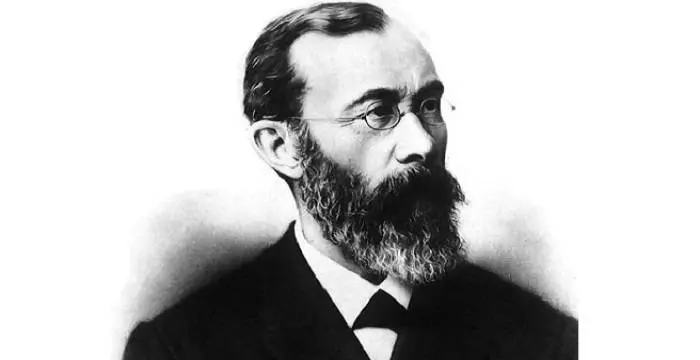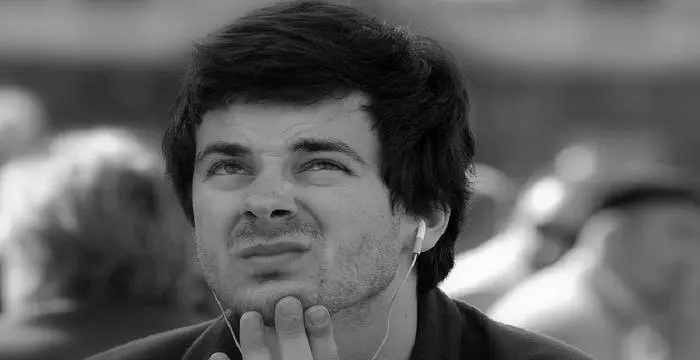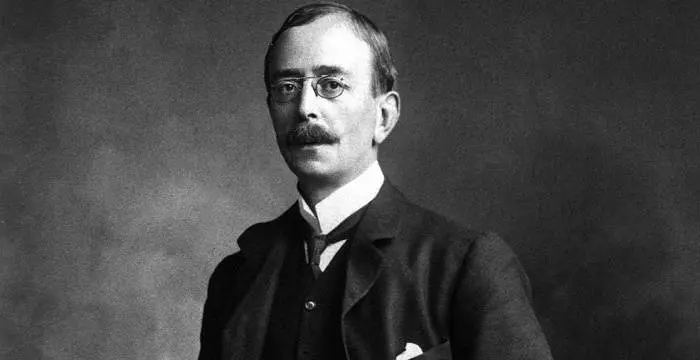
Charles Scott Sherrington - Neurophysiologist, Birthday and Family
Charles Scott Sherrington's Personal Details
Charles Sherrington was a Nobel Prize winning English scientist who explained the function of neurons in the human body
| Information | Detail |
|---|---|
| Birthday | November 27, 1857 |
| Died on | March 4, 1952 |
| Nationality | British |
| Famous | Scientists, Physiologists, Neurophysiologist |
| Hobbies | History, Photography, Poetry |
| Spouses | Ethel Mary Wright |
| Siblings | George Sherrington, William Sherrington |
| Known as | Sir Charles Scott Sherrington, Sir Charles Sherrington |
| Childrens | Carr E.R. Sherrington |
| Universities |
|
| Birth Place | Islington |
| Gender | Male |
| Father | James Norton Sherrington |
| Mother | Anne Brookes |
| Sun Sign | Sagittarius |
| Born in | Islington |
| Famous as | Neurophysiologist |
| Died at Age | 94 |
// Famous Neurophysiologist
Sir John Eccles
Sir John Carew Eccles was a neurophysiologist from Australia who was awarded the Nobel Prize in Physiology or Medicine. This biography profiles his childhood, life, career, research, achievements and timeline.
Torsten Wiesel
Torsten Wiesel is a Nobel Prize winning Swedish neurophysiologist who was one of the co-recipients of the 1981 Nobel Prize in Physiology or Medicine. Check out this biography to know about his childhood, life, achievements, works & timeline.
David H. Hubel
David Hunter Hubel was a Nobel Prize winning Canadian neurophysiologist noted for his work on the structure and function of the visual cortex. Check out this biography to know about his childhood, life, achievements, works & timeline.
Charles Scott Sherrington's photo
Who is Charles Scott Sherrington?
Doctor Sir Charles Scott Sherrington is one of the most famous scientists who studied neurons and the work of reflexes in the body. Born in the heart of the British Empire, Charles was raised in an environment that fostered education and a love for the arts, which remained with him for the rest of his life. After studying in a prestigious school, he was guided by excellent mentors in the university, from where he earned a degree in medicine. Sherrington doggedly pursued his education for years, combining his studies with hands-on research into neurology and pathology of both animals and humans. After successfully completing a number of elite degrees, Sherrington became a professor, where he continued to conduct groundbreaking research into bacteriology, pathology and neurology. His work garnered enough attention that he later became a professor at two extremely prestigious universities, as well as being awarded two dozen honorary degrees from other universities around the world. For his service to Britain, Charles was knighted by the Queen of England. His book on animal physiology served as a standard textbook for university students for several decades. After an extremely long and productive professional life, Sherrington retired, where he continued to correspond with his students and fellow intellectuals around the world. Dying of natural causes at an advanced age, Charles Sherrington is hailed internationally as a pioneering scientist in the fields of neurology and pathology.
// Famous Physiologists
Theodor Schwann
Theodor Schwann was a German physiologist who discovered the Schwann cells in the peripheral nervous system. This biography of Theodor Schwann provides detailed information about his childhood, life, achievements, works & timeline.
Wilhelm Wundt
Wilhelm Wundt was a renowned doctor who conducted pioneering studies on experimental psychology. To know more about his childhood, career, profile and timeline read on
Charles Best
Charles Best was a great scientist and a renowned physiologist who is remembered for being the co-discoverer of insulin. Read this biography to learn about his profile, childhood, life and timeline.
Childhood & Early Life
Charles Sherrington was born in Islington, an area of London, Great Britain, on November 27, 1857. The identity of his parents has been a subject of debate, with some sources saying his father was James Norton Sherrington, a country doctor, and Anne Brookes. Other sources say that Charles, as well as both of his brothers, were the sons of Anne Brooks and Caleb Rose, a surgeon in Ipswich.
Charles grew up under the tutelage of Caleb Rose, who maintained an excellent selection of books, paintings and geological items, which sponsored a lifelong love of art and intellectual curiosity. At the age of 14, he enrolled in the ‘Ipswich School’.
As a young man, he began studying with the ‘Royal College of Surgeons’ in England. He also wanted to study at Cambridge but his family could not afford it.
In 1876, he enrolled at St. Thomas' hospital to study medicine. Three years later, he entered Cambridge as a non-collegiate student to pursue a course in physiology.
In 1883, he took home many top honors in ‘Natural Sciences Tripos’, an international academic competition.
Career
In 1884, he was admitted as a member of the ‘Royal College of Surgeons’. The same year, he and a fellow scientist published a landmark paper on brain surgery they had conducted on a dog.
In 1885, he earned a Bachelor's degree in Medicine and Surgery from ‘Cambridge University’. He was also hired by ‘Cambridge University’ to travel to Spain to investigate an outbreak of Asiatic cholera.
In 1886, Sherrington successfully became a licentiate of the ‘Royal College of Physicians’, a prestigious group of elite medical experts. During the same year, he was sent to Italy to investigate another cholera outbreak.
In 1891, he was appointed to become the superintendent of the ‘Brown Institute for Advanced Physiological and Pathological Research’ of the ‘University of London’, where he conducted both human and animal research.
In 1892, he discovered the unique muscles that initiate the stretch reflex. For the next two years, Charles would publish several papers on the subject of spinal reflexes and nerve supply to the muscles.
In 1895, he became the Professor of Physiology at Liverpool. Two years later, Sherrington gave a famous lecture entitled the 'Croonian Lecture' on his work on animal pathology.
In 1906, a compendium of ten of Sherrington's lectures, delivered at ‘Yale University’ was published in a book entitled 'The Integrative Action of the Nervous System'.
In 1913, he was awarded the ‘Waynflete Chair of Physiology’ at ‘Oxford University’. Several of his students went on to be Nobel laureates.
In 1919, he published his landmark book 'Mammalian Physiology: a Course of Practical Exercises'.
In 1925, he published 'The Assaying of Brantius and other Verse', a book of poems about World War I.
In 1933, he gave a much-admired lecture in Cambridge entitled 'The Brain and its Mechanism' outlying his belief that mental performance affected physiological processes.
In 1936, he retired from Oxford. He then moved back to Ipswich and built his own house, where he continued to correspond with students and intellectuals around the world.
In 1940, a book entitled 'Man on His Nature', featuring Sherrington's thoughts on philosophy and religion, was published.
Major Works
Though Charles Sherrington is credited with numerous discoveries in the field of biology, his most important contribution is the theory which explains the function of a neuron and the mechanism behind occurrence of reflexes in the human body, known as the ‘Sherrington’s Law’.
Awards & Achievements
In 1932, Sherrington was awarded the Nobel Prize for Physiology or Medicine for his theories on the human nervous system particularly the workings of a neuron.
In 1922, he was made a Knight Grand Cross of the Most Excellent Order of the British Empire. He also won several other extremely prestigious scientific awards and was given honorary doctorates from 22 different universities around the world.
Personal Life & Legacy
On August 27, 1891, Charles Sherrington married Ethel Mary Wright. Together, they had one son, Carr E.R. Sherrington.
On March 4, 1952, this eminent scientist breathed his last in Sussex, England at the age of 94.
In 1916, he openly supported women being admitted to the medical school at ‘Oxford University’, making him an early feminist. His favorite past-time was collecting and reading old books.
Two different reflexes, two laws about spinal nerves, and a phenomenon concerning skeletal muscles, are all named after this eminent scientist.
Trivia
During WW1, Sherrington worked at a shell factory in Birmingham, England
// Famous Scientists
Juliane Koepcke
Juliane Koepcke is a German-Peruvian biologist, who was the lone survivor among the 92 passengers and crew of the ill-fated LANSA Flight 508 that crashed in the Peruvian rainforest on 24 December 1971. Know more about her life in this biography.
Henry Cavendish
Henry Cavendish was a theoretical chemist and physicist, renowned for discovery of hydrogen and calculation of the mass of earth. To know more about his childhood, profile, timeline and career read on
Konstantin Tsiolkovsky
Konstantin Tsiolkovsky was a Russian rocket scientist and a pioneer of astronautics. This biography provides detailed information about his childhood, family, personal life, career, achievements, etc.
Charles Scott Sherrington's awards
| Year | Name | Award |
|---|---|---|
Other | ||
| 0 | 1932 - Nobel Prize in Physiology or Medicine | |
| 0 | 1927 - Copley Medal | |
Charles Scott Sherrington biography timelines
- // 27th Nov 1857Charles Sherrington was born in Islington, an area of London, Great Britain, on November 27, 1857. The identity of his parents has been a subject of debate, with some sources saying his father was James Norton Sherrington, a country doctor, and Anne Brookes. Other sources say that Charles, as well as both of his brothers, were the sons of Anne Brooks and Caleb Rose, a surgeon in Ipswich.
- // 1876In 1876, he enrolled at St. Thomas' hospital to study medicine. Three years later, he entered Cambridge as a non-collegiate student to pursue a course in physiology.
- // 1883In 1883, he took home many top honors in ‘Natural Sciences Tripos’, an international academic competition.
- // 1884In 1884, he was admitted as a member of the ‘Royal College of Surgeons’. The same year, he and a fellow scientist published a landmark paper on brain surgery they had conducted on a dog.
- // 1885In 1885, he earned a Bachelor's degree in Medicine and Surgery from ‘Cambridge University’. He was also hired by ‘Cambridge University’ to travel to Spain to investigate an outbreak of Asiatic cholera.
- // 1886In 1886, Sherrington successfully became a licentiate of the ‘Royal College of Physicians’, a prestigious group of elite medical experts. During the same year, he was sent to Italy to investigate another cholera outbreak.
- // 1891In 1891, he was appointed to become the superintendent of the ‘Brown Institute for Advanced Physiological and Pathological Research’ of the ‘University of London’, where he conducted both human and animal research.
- // 27th Aug 1891On August 27, 1891, Charles Sherrington married Ethel Mary Wright. Together, they had one son, Carr E.R. Sherrington.
- // 1892In 1892, he discovered the unique muscles that initiate the stretch reflex. For the next two years, Charles would publish several papers on the subject of spinal reflexes and nerve supply to the muscles.
- // 1895In 1895, he became the Professor of Physiology at Liverpool. Two years later, Sherrington gave a famous lecture entitled the 'Croonian Lecture' on his work on animal pathology.
- // 1906In 1906, a compendium of ten of Sherrington's lectures, delivered at ‘Yale University’ was published in a book entitled 'The Integrative Action of the Nervous System'.
- // 1913In 1913, he was awarded the ‘Waynflete Chair of Physiology’ at ‘Oxford University’. Several of his students went on to be Nobel laureates.
- // 1916In 1916, he openly supported women being admitted to the medical school at ‘Oxford University’, making him an early feminist. His favorite past-time was collecting and reading old books.
- // 1919In 1919, he published his landmark book 'Mammalian Physiology: a Course of Practical Exercises'.
- // 1922In 1922, he was made a Knight Grand Cross of the Most Excellent Order of the British Empire. He also won several other extremely prestigious scientific awards and was given honorary doctorates from 22 different universities around the world.
- // 1925In 1925, he published 'The Assaying of Brantius and other Verse', a book of poems about World War I.
- // 1932In 1932, Sherrington was awarded the Nobel Prize for Physiology or Medicine for his theories on the human nervous system particularly the workings of a neuron.
- // 1933In 1933, he gave a much-admired lecture in Cambridge entitled 'The Brain and its Mechanism' outlying his belief that mental performance affected physiological processes.
- // 1936In 1936, he retired from Oxford. He then moved back to Ipswich and built his own house, where he continued to correspond with students and intellectuals around the world.
- // 1940In 1940, a book entitled 'Man on His Nature', featuring Sherrington's thoughts on philosophy and religion, was published.
- // 4th Mar 1952On March 4, 1952, this eminent scientist breathed his last in Sussex, England at the age of 94.
// Famous British peoples
Wentworth Miller
Wentworth Miller is an American actor and screenwriter who achieved recognition for his role in the TV series ‘Prison Break’.
Sophie Reade
Sophie Victoria Reade is a British model and reality show star. Let’s take a look at her family and personal life, including her age, birthday, boyfriends, and some interesting facts.
Josh Temple
Check out all that you wanted to know about Josh Temple (Slogoman), the famous British YouTube Personality; his birthday, his family and personal life, his girlfriends, fun trivia facts and more.
Yammy Xox
Check out all that you wanted to know about Yammy Xox, the famous British YouTube Personality; her birthday, her family and personal life, her boyfriends, fun trivia facts and more.
Grian
Grian is an English YouTube gamer and social media influencer. Check out this biography to know about his birthday, childhood, family life, achievements and fun facts about him.
Benjamin Atkinson
Benjamin Atkinson is the son of the world-renowned British actor and comedian, Rowan Atkinson. Check out this biography to know about his childhood, family, personal life, including his age, birthday, etc.
Charles Scott Sherrington's FAQ
What is Charles Scott Sherrington birthday?
Charles Scott Sherrington was born at 1857-11-27
When was Charles Scott Sherrington died?
Charles Scott Sherrington was died at 1952-03-04
Where was Charles Scott Sherrington died?
Charles Scott Sherrington was died in Eastbourne
Which age was Charles Scott Sherrington died?
Charles Scott Sherrington was died at age 94
Where is Charles Scott Sherrington's birth place?
Charles Scott Sherrington was born in Islington
What is Charles Scott Sherrington nationalities?
Charles Scott Sherrington's nationalities is British
What is Charles Scott Sherrington hobbies?
Charles Scott Sherrington's hobbies is History, Photography, Poetry
Who is Charles Scott Sherrington spouses?
Charles Scott Sherrington's spouses is Ethel Mary Wright
Who is Charles Scott Sherrington siblings?
Charles Scott Sherrington's siblings is George Sherrington, William Sherrington
Who is Charles Scott Sherrington childrens?
Charles Scott Sherrington's childrens is Carr E.R. Sherrington
What was Charles Scott Sherrington universities?
Charles Scott Sherrington studied at King's College London, 1886 - Gonville and Caius College, Cambridge, Ipswich Grammar School, Ipswich School, Royal College of Surgeons of England, University of Cambridge
Who is Charles Scott Sherrington's father?
Charles Scott Sherrington's father is James Norton Sherrington
Who is Charles Scott Sherrington's mother?
Charles Scott Sherrington's mother is Anne Brookes
What is Charles Scott Sherrington's sun sign?
Charles Scott Sherrington is Sagittarius
How famous is Charles Scott Sherrington?
Charles Scott Sherrington is famouse as Neurophysiologist
